Q&A: Pharmacist-Led Diabetes Management Transforms Patient Care and Clinical Outcomes
An ambulatory care pharmacist program in Washington State dramatically improved diabetes management by reducing A1c levels, increasing medication adherence, and providing comprehensive patient education.
In a program sponsored by Washington State University and conducted at a Rockwood clinic in Spokane, Washington, investigators showed the impact of an ambulatory care pharmacist on clinical and quality outcomes in primary care. Launched in June 2023, the initiative focused on managing medications for high-risk diabetes patients through a collaborative drug therapy agreement. Nathan Ramsbacher, PharmD, a clinical assistant professor of pharmacotherapy at Washington State University, discusses the findings as part of the American Diabetes Association (ADA) 85th Scientific Sessions 2025.
Drug Topics®: Your poster focuses on a pharmacist-managed diabetes pharmacotherapy (PMDP) service. What is the pharmacist's role in such a service within a primary care clinic, particularly for high-risk patients?
Nathan Ramsbacher, PharmD: Our project evaluated the impact that an ambulatory care pharmacist position had on clinical and quality outcomes at our primary care clinic. So I'm here at a Rockwood Clinic with Multicare in Spokane, Washington, and the project is all sponsored by Washington State University. So we started it in June of [20]23, so the ambulatory care and pharmacist-managed pharmacotherapy was new to our clinics in this region, although our health system has well-established services similar to this program in the western side of Washington State. Here, where I'm at, the pharmacist's role in the service within primary care was then similar to kind of seeing what was at the other clinics, but then we adapted it to best meet the needs of our region. [In] this service, we focused on using a pharmacist to manage medications for people with diabetes who might be at higher risk of complications, and we did that in collaboration with our primary care providers. We used a collaborative drug therapy agreement. Some people also call it a CPA, or collaborative practice agreement, and then we used our pharmacist to allow them to order medications, labs and perform very basic physical exams, and Washington State, thankfully, has one of the most progressive pharmacist scopes in our country and allows clinical pharmacists to bill directly to Medicaid and commercial insurances directly for reimbursement of our ambulatory care services. So pharmacotherapy management for diabetes also included promoting diabetes education, so helping patients not only with pharmacotherapy but with lifestyle, diet, exercise, and device education. In addition to this pharmacotherapy management, our service also assists in increasing access to medications and care visits by coordinating with pharmacies on dispensing, assisting with manufacturer patient assistance programs and helping with prior auth[orizations]. Last, we served as a drug information resource, as almost all pharmacists do, but everything all disease states related to primary care.
Drug Topics: The study focused on a specific high-risk population. What is considered high risk, and why is it particularly crucial for pharmacists to be involved in the care of these high-risk individuals?
Ramsbacher: The high-risk population can be vague sometimes. I'll show you what we kind of looked at. So we wanted to focus on patients that would need our services the most at our clinic and could stand to benefit from pharmacotherapy management with a pharmacist. So, we looked at a specific subset of patients initially. We looked at people with patients with A1c is greater than 9%, new diagnoses of diabetes, and that's type 1, type 2, type 3c, all sorts of diabetes. We looked at people with recent hospital admits for diabetes, like DKA [diabetic ketoacidosis] or HHS [hyperosmolar hyperglycemic state], and then people with history of severe hypoglycemia. Many of these patients required more frequent visits in the primary care setting than what was available with our provider schedules. We were able to see some of these folks as often as every week to ensure all their needs were met. Pharmacists were also a really excellent resource for these patients because they typically have a high medication burden and require complex pharmacotherapy management, and so pharmacists were able to see these patients for longer periods of time at more frequent intervals to focus specifically on diabetes.
Drug Topics: Based on the results, what strategies or interventions would you employ as a pharmacist to contribute to such a significant A1c reduction in patients with type 2 diabetes?
Ramsbacher: We had really excellent results in many forms and I'm really excited to announce those, but notably, we reduced the number of patients with A1c is greater than 9 by 89, so almost half the patients that we had saw were reduced below 9% and then the average A1c was reduced by 1.56%, so I really believe the results were multifactorial but kind of boiled down to a few things. First and foremost, we reduced clinical inertia and increased access to care visits by seeing patients more frequently with longer visit times, but then we also focused heavily on increasing access to medications by ensuring patients were able to afford their medication regimens and that they were able to take the medications that they were prescribed and that all these medication decisions were driven by the ADA Standards of Care.
Drug Topics: The study reported improved adherence to eye exams, statins, and kidney health evaluations. How can a pharmacist actively promote and improve patient adherence to these aspects of diabetes care, especially eye care, which might not be seen by patients as essential?
Ramsbacher: That can be kind of a hard sell sometimes, but this was a major goal of our program. So as part of our value-based agreements and population health goals, we were aiming to improve CMS clinical quality measures and star ratings in multiple buckets. So most notably, we improved the percent of people with A1cs greater than 9 but also improved 3 other CMS metrics. So we looked at 131, which is eye exams for people with diabetes; 347, which is statin adherence for people with diabetes; and then 951 which centers around kidney health. So our eye exams were a larger initiative at our institution, and we had multiple people working on this, not only pharmacists. So I hate to take credit for all of it because it really was a very big team-based effort, but reminding patients at their visits, coordinating care delivery, and then also ordering referrals to eye exams. Statin adherence that was improved by ensuring adequate adherence, looking at the refills, making sure that they had plenty of refills at every visit, and ordering them when needed, addressing some concerns that they have. A lot of people with statins have concerns of [adverse] effects or things that they might have read on the internet, and so pharmacists can really help to help dispel some of these medical disinformation but then also kind of promoting the benefits. One thing I did a lot was show patients their ASCVD risk score before and after taking a statin and what that really realistically means for that unique individual on their health journey and making sure that they have the best outcomes. Lastly, kidney health outcomes, we improved that by ensuring that the yearly exams not only included the basic metabolic panels, which measured serum creatinine, but also including the urinary microalbumin-to-creatinine ratios that are necessary for detecting proteinuria and early kidney disease and preventing developing diabetic kidney disease. So this, along with other things such as vaccine adherence, these are all essential parts of the American Diabetes Association Standards of Care and the national guidelines that promote the absolute peak quality of health care for people with diabetes, and so we focus on these at every visit, made sure that they were up to date, and if they weren't really trying to promote that as much as possible, and then last, trying to educate patients on why these are important for their health, ensuring that they live not only long lives but good quality lives.
Ready to impress your pharmacy colleagues with the latest drug information, industry trends, and patient care tips? Sign up today for our
Newsletter
Pharmacy practice is always changing. Stay ahead of the curve with the Drug Topics newsletter and get the latest drug information, industry trends, and patient care tips.















































































































































